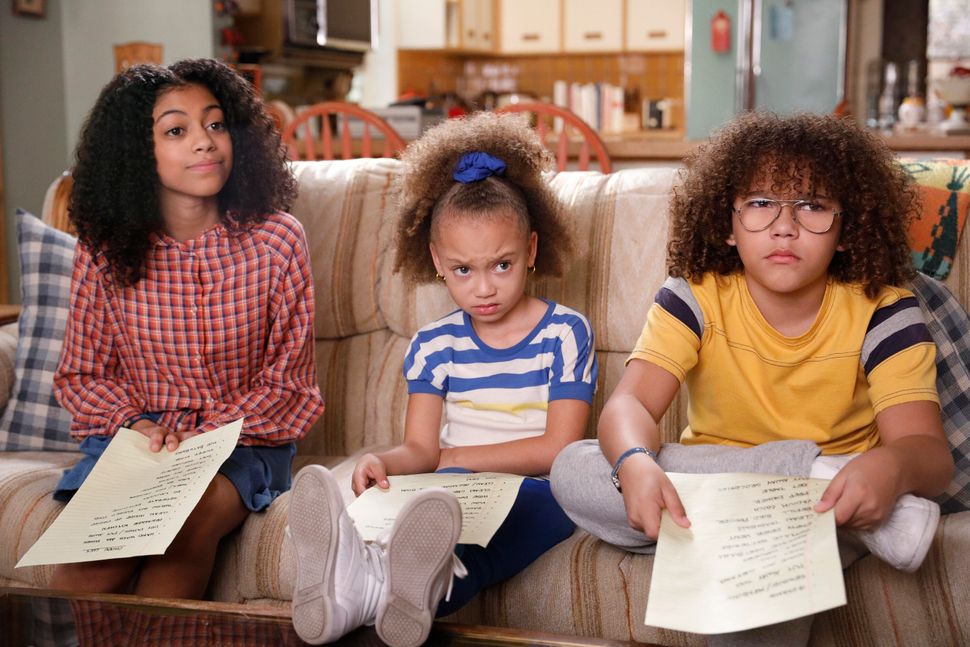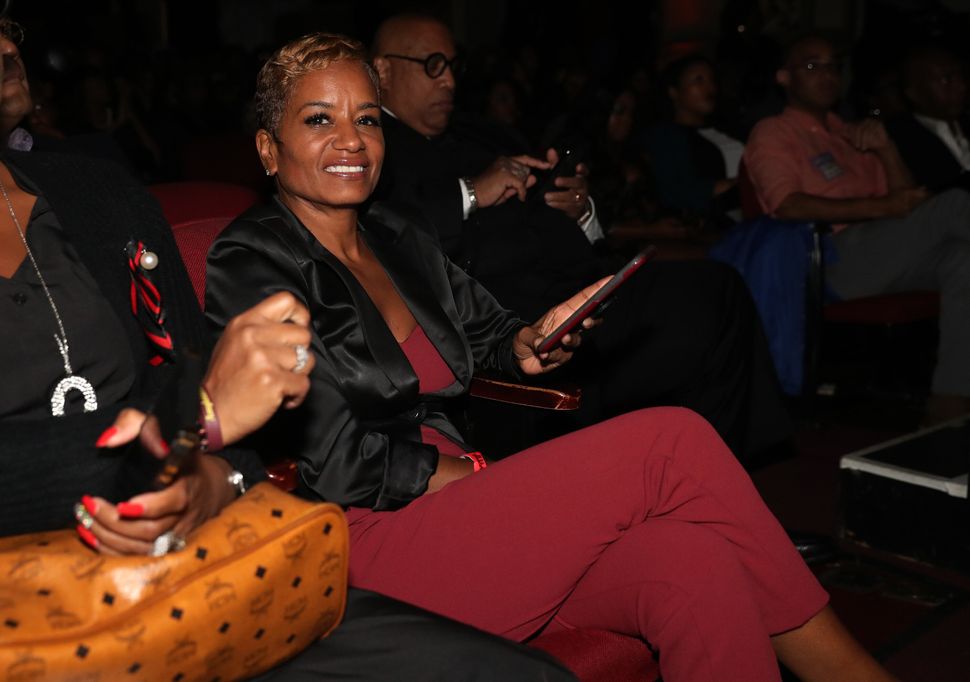[ad_1]
When I was in kindergarten, my teacher asked my class to draw portraits of ourselves as princes and princesses. I don’t remember this moment, but my mother saved my drawing — as she does everything — and showed me years later. I drew myself in a relatively elaborate red dress, complete with puff sleeves and made of what I presume was supposed to be chiffon. I sketched my spindly arms in a perfect first position, just like I’d learned in my ballet lessons. My brown ankles were just visible above sparkly flats, and I had colored my face in with a caramel-brown crayon that beautifully contrasted with the pink circles of my cheeks.
I also drew myself with long, billowing waves of blond hair.
Seeing this drawing years later gave me a pang in my stomach, but it was also unsurprising. No, I never had blond hair, but my mom did. I’m biracial ― my mother is white and my father is Black ― and back then, I didn’t understand why I didn’t look like either of them. Though I looked nothing like my beautiful mom, I remember liking my brown skin and my freckled face.
But boy, did I want her hair.
I discovered early that my hair was chameleonic. When I flat ironed it for the first time, suddenly I had “good hair” in the eyes of the white people around me. As I traversed adolescence, the many ways I chose to wear my hair had everything to do with my navigating my racial identity as a mixed girl struggling to find where she fit in — a girl who could belong everywhere and nowhere at the same time.
As a biracial child growing up in America, I endured some of the pain of the Black American experience. It presented in ways familiar to any person of color — through the stigma and stereotypes attached to the hue of your skin, through an aggregation of microaggressions that place an invisible weight on a young spirit. I also faced the growing pains every adolescent faces as they try to discover who they are.
A Pew Research Center study on mixed-race Americans found that “the multiracial identity gap” is shaped by how you were raised, how you see yourself, and how various societies see you, in addition to the literal sum of races in your ethnic background. For me, the fight to bridge this gap often manifested itself in ways I didn’t understand. In retrospect, the most obvious example was my relationship with my hair.
At around 10 years old, I started straightening my hair with near-obsessive intention. My curls didn’t have enough of a kinky texture to stand up in an Afro or twist into pretty ringlets, and I’d often joke that my natural tresses couldn’t decide what they wanted to be.
I became compulsive about trips to the salon (I went to the local Ulta store because my mom hadn’t discovered Black hair salons yet). I was wrought with anxiety over my hair looking perfectly straight and glossy at all times.
Because of its loose-curl texture, all the stylist had to do was apply some heat and some product, and my hair could look just like my mom’s hair and just like my classmates’ hair, and like that of every girl on a magazine cover, and in the movies and on TV, and so forth.
Now I have an intimate understanding of the toxic ways we’re socialized to see beauty, intelligence and innocence, but I didn’t understand it as a child. Today’s biracial youth may find more help in the still limited representation of multiracial families on TV and celebrities who are outspoken about their own identities.

In the third episode of ABC’s “Mixed-ish,” Alicia Johnson sits down with her biracial children, who have chosen to straighten their hair for the first time, and tells them that it hurts her because it makes her feel like she didn’t raise them to “love themselves.” One child then asks her, “So I’m not a good Black person if my hair is straight?”
That moment perfectly illustrates the symbolism associated with the way biracial individuals choose to wear their hair. From quarterback Colin Kaepernick sporting a giant Afro as he kneeled during the national anthem to singer Alicia Keys donning a headwrap at the Grammys, hairstyles can also serve as personal statements. Misty Copeland, a biracial and barrier-breaking professional ballerina, recently opened up about her struggles with hair perception as a young dancer.
“Even before I danced, I feel like [my hair] was just something that I never felt like it was beautiful, you know?” she said to Essence. “It’s like I wanted to have my hair straight. I wanted to have bangs like the other white girls around me.”
Copeland went on to say that since she’s started rocking her natural hair, she’s shared poignant moments with young Black girls who have told her they love it.
Zoë Kravitz, who is Black and Jewish, has also opened up about the way she chose to style her hair in her youth versus in the present day.
“The things that made me different were the things I didn’t like about myself; I wanted to straighten my hair, remind people that I was half white,” the actor told Elle. “I felt like a freak because my hair was different.”
I associated my natural hair with a fair amount of physical pain because my mom had no idea how to tame it, and every evening was war by comb. My natural hair texture made me different not only from my majority-white peers but also from my own family.
Publicist and communications adviser Rachel Noerdlinger, who was raised by her adoptive white parents, recalls having a very similar experience.
“I have nothing but memories of my mother struggling with my hair,” she said, with a warm laugh. “I’ve wrestled with my hair and the concept of my identity my entire life. Early on, I always wore my hair in a sort of unruly Afro that my parents did not know how to tame or manage. In my elementary school days, I actually remember some of the kids hiding pencils in my Afro. So that early trauma of having my hair be the center of conversation kind of set off my quest to understand my hair better.”

She continued: “My hair was just a constant reminder of my confusion about my identity, and so it had greater impacts on my psyche.”
That Pew study found that slightly more than 1 in 10 multiracial adults have worn their hair in a certain way to try to affect how others perceive and accept their race. Just like my relationship to my racial identity, my hair choices ebbed and flowed as I grew up. At around eighth grade, I swung back in the natural direction with as much force as I could muster. I suddenly liked rocking my curly locks, and I got my hair braided once.
When I entered the ninth grade at my predominantly white boarding school, I was thrown back into the straight hair phase in 30 seconds flat. For the rest of my high school years, I relentlessly fried my mane as my insecurities demanded ― and those insecurities largely stemmed from my white peers reminding me that I was an amorphous “other” every day.
In 2017, science writer Moises Velasquez-Manoff wrote an article for The New York Times exploring the unique challenges of growing up mixed. It was titled “What Biracial People Know.”
“You’re accustomed to the idea of having several selves, and of trying to forge them into something whole,” he wrote.
As I finished high school and went off to college, something miraculous happened: I became whole and was finally able to embrace my natural hair with pride. I came into my own as many 18-year-olds do, but I specifically gained an appreciation for the distinct and powerful perspective that my multiethnic background had afforded me.
I became proud to identify as a biracial woman, a Black woman and a person of color all at once. And unsurprisingly, once I was able to take ownership of all that was me, people around me responded. Trite as it may sound, as I healed, my hair began to as well.
I realized that the way I wore it didn’t have to be an existential choice, or a manifestation of who I wanted to be, because I was already me. I could change every day, and so could my hair, and it didn’t really matter. I like it straight, I like it curly, and neither style defines me.
Calling all HuffPost superfans!
Sign up for membership to become a founding member and help shape HuffPost’s next chapter
[ad_2]
Source link

